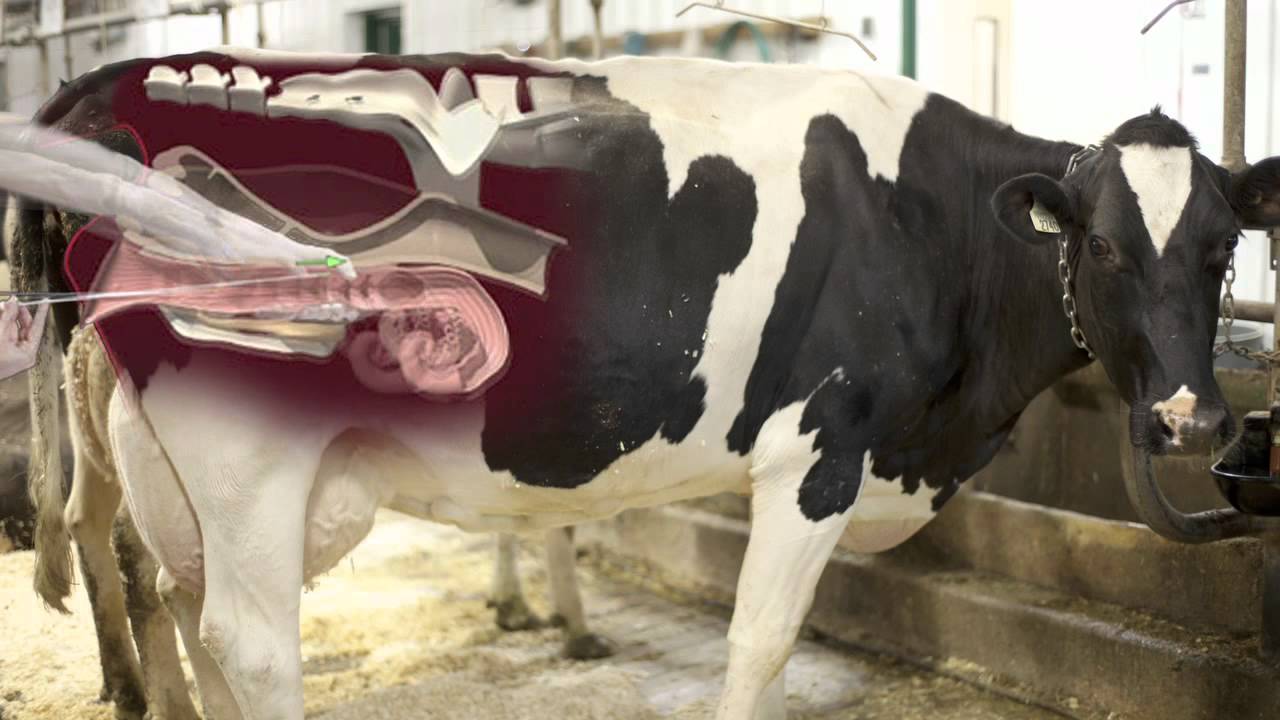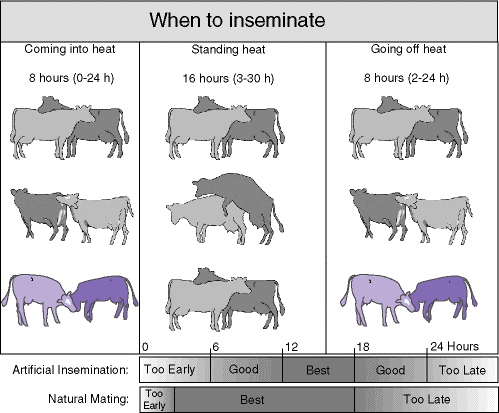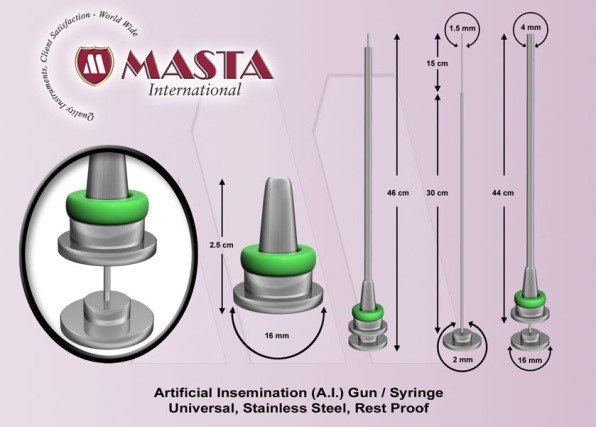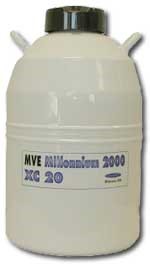
Artificial insemination is a technique by which semen is introduced artificially into the body of the uterus at the time of heat in an attempt to cause pregnancy.
The major advantages of artificial insemination may be summarized as follows:
- It provides the opportunity to choose sires that are proven to transmit desirable traits to the next generation.
- It eliminates the cost and danger of maintaining a bull on the farm.
- It minimises the risk of spreading sexually transmitted diseases and genetic defects (e.g., mule foot).
- It has had cumulative beneficial effects over the years.
The use of artificial insemination makes it necessary to develop a system to identify cows and record dates of heat and inseminations. The accurate recording is necessary to develop good reproductive management on the farm and it provides the data for breeding associations to keep accurate herd books.
Artificial insemination or natural service lead to pregnancy only if the spermatozoa are "at the right place at the right time." The egg is released from the ovary about 10 to 14 hours after the end of the heat and can only survive unfertilized for six to 12 hours. In contrast, spermatozoa may live up to 24 hours in the reproductive tract of a cow. A common recommendation for the best timing of artificial insemination is the "morning-evening" rule: cows observed in heat in the morning are inseminated the same evening, and cows observed in heat in the afternoon are inseminated the next morning.
In the case of natural service, the cow and the bull may be allowed to mate starting a few hours after the cow accepts mounting until the cow refuses to be mounted.

The most limiting factor in artificial insemination programs is the proper detection of cows or heifers in oestrus. Oestrus, or “heat”, is that period of time that occurs every 18-24 days in sexually mature, non-pregnant female cattle when they are receptive to mounting activity by bulls or other cows. In beef cattle operations where artificial insemination is the means of breeding the females, the herdsman must recognize and interpret a cow’s heat signals. Proper timing of the artificial insemination is necessary to accomplish a high percentage of conceptions in the cows that are bred artificially.
Considerable amounts of research have been conducted on the various factors contributing to the efficiency with which cows are detected in heat. When all is considered, one of the key factors is the skill of the human performing the heat detection. With an AI program, people assume the same responsibility as the bull for accurately detecting heat and the proper timing of insemination. Thus, the dilemma for the inseminator is determining which cows are in a "standing heat" and when that heat occurs.
A cow is fertile only when an egg has been released (or ovulated) from the ovary. This occurs about 10-14 hours after the period called "standing heat" ends. Because sperm need time in the cow’s reproductive tract before they are capable of fertilizing the egg, insemination should be made several hours before ovulation. This means that for the highest fertility, cows or heifers should be inseminated in the latter two-thirds of heat or within a few hours after having gone out of heat. This represents approximately 12-18 hours after the cow first comes in "standing heat."
What Instruments are Used in AI?

AI gun/syringe is manufactured for injecting the semen into the vagina of the animal.

An AI tank used for storing semen
Click here to view a video that explains super cow creators.